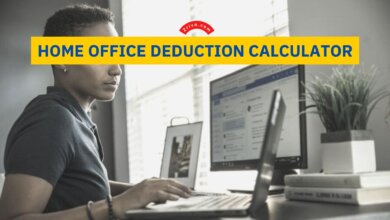Above-The-Line Tax Deductions
There are many tax deductions that reduce your taxable income. However, not all deductions are created equal. For example, some deductions are more expensive for high-income taxpayers. These are called above-the-line deductions.

Above-the-line tax deductions are adjustments to your adjusted gross income (AGI) that can help you lower your taxes. These deductions can be claimed without itemizing your tax return and are often much easier than line-item deductions. They can include educator expenses, health savings account deductions, deductible self-employment taxes, deductible retirement contributions, student loan interest, and tuition and fees. These deductions can significantly reduce your tax bill. However, they are only available to those who qualify.
Most above-the-line deductions are found on the first page of your federal income tax return in the Adjusted Gross Income section. These deductions are also known as adjustments to income and include deductions such as educator expenses, 401(k) contributions, and health savings account (HSA) contributions. These deductions can be particularly useful for individuals who are able to qualify for them. Above-the-line deductions are listed on the front of IRS Form 1040. They include things like IRA contributions, educator expenses, and the domestic production activities deduction.

What are Above-the-Line Deductions?
There are several above-the-line deductions, including one for half of the self-employment tax (Social Security and Medicare taxes you must pay if you work for yourself). You can also deduct the cost of health insurance premiums paid for you, your spouse, and any qualifying children. You can also deduct alimony payments if the divorce or separation agreement expressly states that the payment is alimony. These above-the-line deductions aren’t as common as the standard deduction or line-item deductions, but they can provide substantial savings for many taxpayers. They are particularly valuable for high-income individuals who need to slash their AGI in order to qualify for other tax breaks. Here are some examples of common above-the-line deductions:
- Teachers and educators can deduct up to $250 for out-of-pocket expenses on classroom supplies, such as books, materials, and software.
- Contributions to an HSA can be deducted up to the annual limit set by the IRS, provided you meet the eligibility requirements.
- You can deduct up to $2,500 of interest paid on qualified student loans, subject to income limitations.
- Self-employed individuals can deduct the employer-equivalent portion of self-employment taxes, typically 50% of the total self-employment tax.
- Contributions to traditional Individual Retirement Accounts (IRAs) or Simplified Employee Pension (SEP) IRAs can be deducted, subject to certain income limits and other criteria.
- If you are self-employed and pay for your health insurance, you can deduct the premiums you pay for yourself, your spouse, and your dependents.
- For divorces finalized before 2019, alimony payments can be deducted as an above-the-line deduction. However, this deduction is no longer available for divorces finalized in 2019 or later.
- While the general deduction for moving expenses was eliminated for most taxpayers, it may still be available for active-duty members of the military who meet certain criteria.





